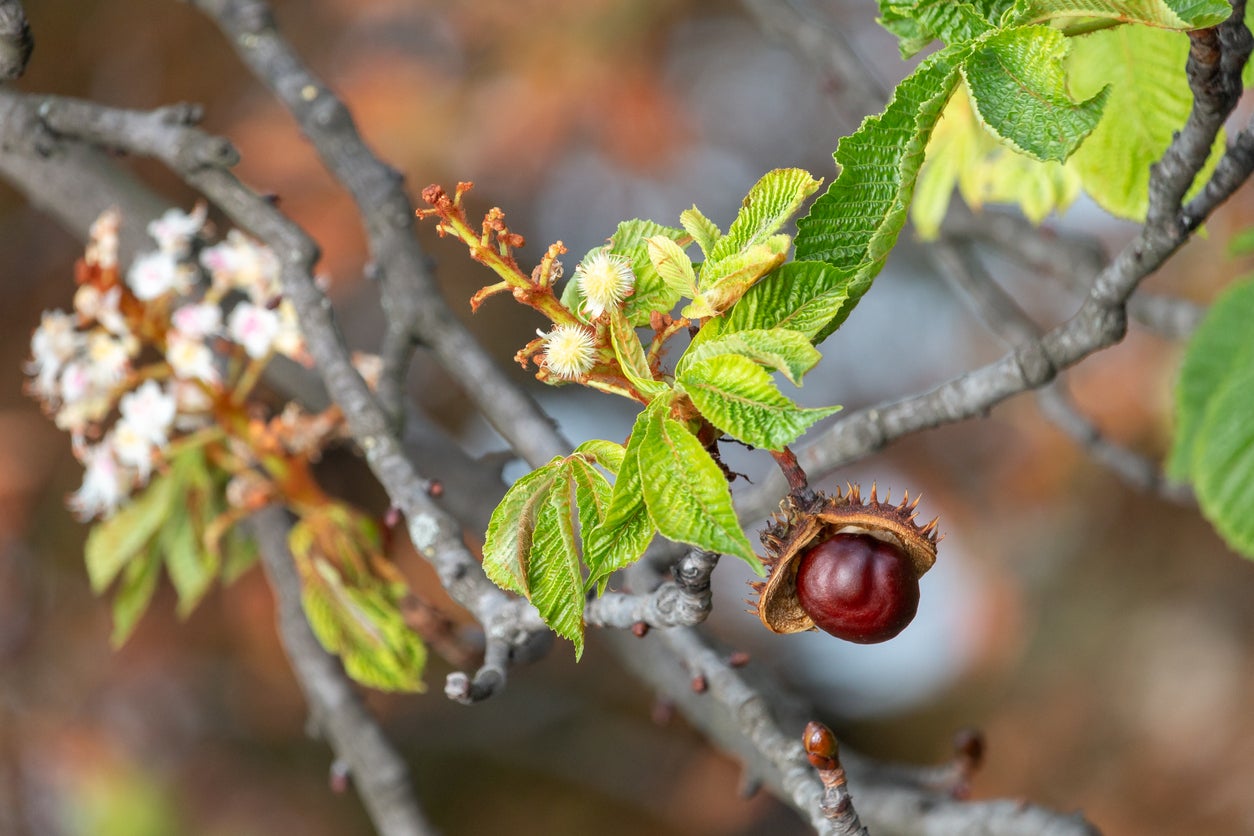Horse Chestnut Varieties – Are Buckeyes And Horse Chestnuts The Same


Ohio buckeyes and horse chestnuts are closely related. Both are types of Aesculus trees: Ohio buckeye (Aesculus glabra) and common horse chestnut (Aesculus hippocastanum). Although the two have many similar attributes, they aren’t the same. Are you wondering how to tell the difference between buckeyes and horse chestnuts? Let’s look at a few of the distinguishing characteristics of each and learn more about other Aesculus varieties too.
Horse Chestnut vs. Buckeye
Buckeye trees, so named for the shiny seed that resembles the eye of a deer, is native to North America. Horse chestnut (which isn’t related to the common chestnut tree), hales from the Balkan region of Eastern Europe. Today, horse chestnut trees are widely grown across the northern hemisphere. Here’s how these Aesculus trees are different.
Growth Habit
Horse chestnut is a large, stately tree that reaches heights of 100 feet (30 m.) at maturity. In spring, horse chestnut produces clusters of white flowers with a reddish tinge. Buckeye is smaller, topping out at about 50 feet (15 m.). It produces pale yellow blooms in early summer.
Horse chestnut trees are suitable for growing in USDA plant hardiness zones 4 through 8. Buckeye trees are a bit hardier, growing in zones 3 through 7.
Leaves
Buckeyes and horse chestnuts are both deciduous trees. Ohio buckeye leaves are narrow and finely toothed. In the fall, the medium green leaves turn brilliant shades of gold and orange. Horse chestnut leaves are larger. They are light green when they emerge, eventually turning a darker shade of green, then orange or deep red in autumn.
Nuts
Nuts of the buckeye tree ripen in late summer and early fall, generally producing one shiny nut in each bumpy, brown husk. Horse chestnuts consist of up to four nuts inside spiny green husks. Buckeyes and horse chestnuts are both poisonous.
Types of Horse Chestnut Trees
There are different types of both horse chestnut and buckeye trees too:
Sign up for the Gardening Know How newsletter today and receive a free copy of our e-book "How to Grow Delicious Tomatoes".
Horse Chestnut Varieties
Baumann’s horse chestnut (Aesculus baumannii) produces double, white blooms. This tree produces no nuts, which reduces litter (a common complaint about horse chestnut and buckeye trees).
Red horse chestnut (Aesculus x carnea), possibly native to Germany, is thought to be a hybrid of the common horse chestnut and red buckeye. It is shorter than the common horse chestnut, with mature heights of 30 to 40 feet (9-12 m.).
Buckeye Varieties
Red buckeye (Aesculus pavia or Aesculus pavia x hippocastanum), also known as firecracker plant, is a clump-forming shrub that reaches heights of only 8 to 10 feet (2-3 m.). Red buckeye is native to the southeastern United States.
California buckeye (Aesculus californica), the only buckeye tree native to the western United States, hales from California and southern Oregon. In the wild, it can reach heights of up to 40 feet (12 m.), but usually tops out at only 15 feet (5 m.).

A Credentialed Garden Writer, Mary H. Dyer was with Gardening Know How in the very beginning, publishing articles as early as 2007.